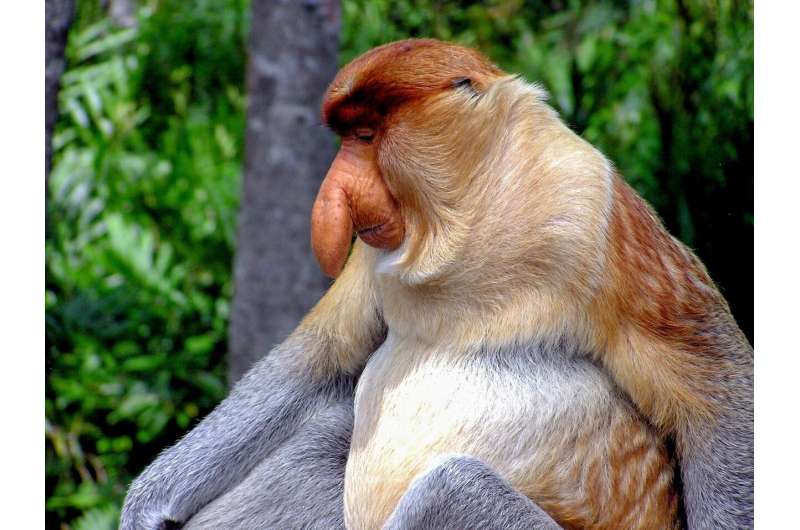This article has been reviewed according to Science X's editorial process and policies. Editors have highlighted the following attributes while ensuring the content's credibility:
fact-checked
trusted source
proofread
Colorful primates don't have better color vision, study finds

Primate species with better color vision are not more likely to have red skin or fur coloration, as previously thought.
The findings, titled "Primate coloration and color vision: a comparative approach," are published this week in the Biological Journal of the Linnean Society, suggest that red skin and/or red-orange fur may be beneficial for use in social communication even in primate species that don't have particularly good color vision.
It's long been assumed that primates' colorful skin and fur is linked to their enhanced color vision, and the results may have implications for understanding why these traits exist in different species.
Lead author Robert MacDonald from the University of Bristol explained, "There is a profusion of color in the animal kingdom—think of the striking feathers of a bird of paradise, or the array of vivid hues on display in a coral reef. Mammals, though, don't tend to be so colorful, and are usually quite muted shades of black, brown, or gray.
"Primates such as monkeys, apes and lemurs are the exception to this. Several primate species have really vibrant coloration, in particular bright red skin on the face or anogenital region, which can change intensity to signal things like fertility or rank in the dominance hierarchy, or red-orange fur.
"Primates also happen to have unusually good color vision in comparison to other mammals; while all other mammals are red-green color blind, meaning red and green appear as the same color to them, some primates (including humans) can differentiate between shades of red and green. This enhanced color visual system is generally thought to have evolved in order to more easily spot ripe red fruit or nutritious young red leaves among foliage, but it also makes it easier to spot the vibrant red colors that some primates exhibit."
Primates are known to use their red color traits for communication with other members of their species, for example, in signaling information about fertility or rank in the social hierarchy. It seems intuitive that having a better color visual system that allows these traits to stand out more might have facilitated the evolution of these traits in the first place. It would make sense for a species with better color vision to evolve to be more colorful to take advantage of this ability.
The team set out to definitively investigate whether the evolution of enhanced color visual system in some primates that allows the differentiation of red from green has facilitated the evolution of red color traits.
Using photographs, the researchers categorized each species of primate in terms of having or not having particular colorful traits (e.g., red skin on the genital region or face, red-orange fur on different parts of the body). They compared this color information with each species' color visual ability, taking into account the primate family tree, as well as a few other factors which might also influence coloration or color visual ability, such as whether they're nocturnal or diurnal, and the size of the social group they live in. The aim was to find out whether species that have better color vision are more likely to have red coloration, after controlling for other potential influencing factors.
MacDonald explained, "The fact that we didn't find that species with better color vision are more likely to be colorful contradicts some long-held assumptions about the origins of the striking variation in color we see within primates, and means we might have to take a closer look about what colorful red skin or fur is being used for in individual species. It shows that despite the large amount of work that has gone into investigating primate coloration in recent years, we still don't fully understand the pressures that have shaped the evolution of color in our own closest relatives."
More information: Robert X Macdonald et al, Primate coloration and colour vision: a comparative approach, Biological Journal of the Linnean Society (2023). DOI: 10.1093/biolinnean/blad089. academic.oup.com/biolinnean/ad … nean/blad089/7269140
Provided by University of Bristol





















